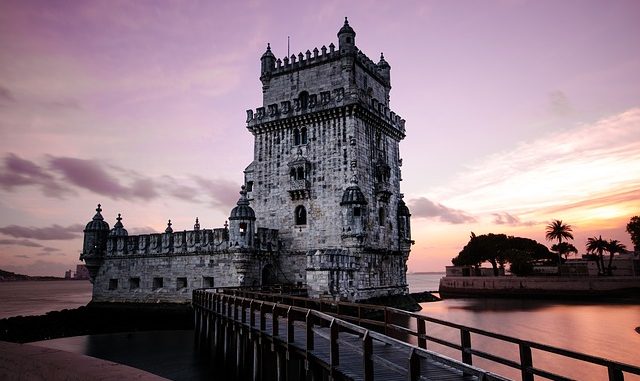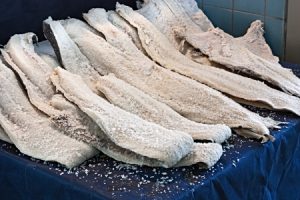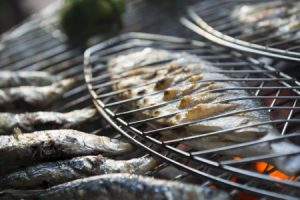
- Portuguese cuisine deserves to be better known. Here we look at some of the key aspects of the cuisine.
Portuguese cuisine combines both aspects of the Mediterranean and the Atlantic. The influences are many and varied because Portugal is a great trading nation and given its many possessions overseas, exploited many different spices and foods to achieve a glorious fusion. It was Henry The Navigator in the 1400s, the Age of Discovery who discovered many of the new vegetables and spices with which we are so familiar. Tomato, potato, pineapple, banana, guava and numerous others came to these shores. Chili probably came to India via Portugal through Goa. Macao on the Chinese mainland also proffered up many different Far Eastern spices. The Portuguese also make great use of olive oil and garlic which provides the Mediterranean end.
Seafood In Portuguese Cuisine
A discussion on Portuguese cuisine will invariably begin with fish and other seafood and end with it. The Portuguese consume more fish than any other European per head. It is thus one of the main sources of protein consumed throughout the country and they have perfected its cooking and presentation to an art. Grilled fish or Peixe Grelhado is highly popular. There’s nothing better than having it served on quayside, watching the chefs cook the catch of the day on a griddle. Sit in the open air, beside the harbours on the Vicentine coast or a Lisbon restaurant and just enjoy the aroma, the flavours – usually nothing more simple than served with lemon.
Possibly the most famous fish is bacalhau or salted codfish which is something closely argued over and in earnest by many in the know, and throughout the Iberian peninsula. There are many different recipes and ways of preparing it. The Portuguese are said to have 365 ways of cooking cod, one for every day of the year. It is versatile and lends itself to great creativity but then it’s often eaten up to three times week which demands inventiveness.
Salted codfish is usually traditionally eaten on Christmas Eve. Its nickname is ‘the faithful friend’ because it is such a stalwart and standby. Some recipes have the cod baked with cream and potatoes as in bacalhau com natas. Bacalhau can be shredded as a garnish for a chickpea salad (salada de bacalhau com grão-de-bicoor) or cut into slices for a classic Portuguese fishcake. I’ve seen pastéis de bacalhau which is a golden crunchy coated fishcake that is very smooth in texture in the middle. It is usually served as a starter or with salad or rice.

Bacalhau à Brás is a sautéed cod dish consumed with olives and onions, fine fries parsley and egg. It’s very moreish but surprisingly easy to construct given the ingredients.
Sardines – simply grilled and if small enough, the flesh is stripped off the bone by running the fish through the teeth. Nothing better ! Tuna is plentiful in the Algarve sea and was caught as the fish shot through the straits below Spain into the Mediterranean and out again.

When it comes to stews, the Cataplana de Marisco is a seafood festival where it should be cooked in a copper double-pan and is served with rice and/or fries. The Algarve is the place to try it ! Another classic one pot fish stew is the Caldeirada de peixe which contains everything fishy, with tomatoes and a range of herbs. It is served with thick crusty bread and forms a hearty nutritious feast.
One mollusc to try is polvo or octopus. This too is a Christmas Eve dinner but we can find it as a starter. It is served cold with onions, olive oil and parsley. Polvo à Lagareiro is octopus, roasted then soaked with olive oil and served with nothing but baked potatoes. Hearty isn’t in it.
Pork

Pork is an Iberian speciality. Black Iberian pigs or porco preto are found throughout Portugal. A particular breed found mainly in the southern and central areas of both Portugal and Spain is used for a great range of dishes. Pata negra is a smoked ham which obtains its particular flavour from the special breeds growing in the Montado districts of the Alentjo region, below Lisbon and above the Algarve. These pigs thrive in ancient oak forests where the pork muscle is lined with a fat that produces a sweet meat. It’s possible to find the secretos, which is a special cut usually served with salad and chips. We should not be surprised by the presence of great sausages, smoked sausages and chouriços. The chouriços is a pork sausage encased in its own intestine. Alheira de Mirandela is composed of smoked sausage which was invented by Jews as an elaborate trick to fool the Christians into thinking they were eating pork. It was actually made of game or other meat.
Desserts

Only one really need be mentioned – Pastel de Nata or the Pastel de Belem. The Portuguese custard tart is a classic which can be eaten from breakfast to late evening. I personally cannot resist these little tarts, dusted with sugar and flavoured with cinnamon in many cases. They were said to be invented by the nuns in the convents of Lisbon. All the egg white was used to starch their clothing, especially their habits and so the excess yolks were turned into something especially more delicious.
All this wonderful food is washed down with Vinho Verde which we’ve been quaffing for 200 years. This green, slightly sparkling wine from Minho offers a light bouquet to any dish.
Medronho is the Monchique mountains version of firewater. It’s a fruit brandy, distilled from the Arbutus or Wild Strawberry tree and is also found in the Algarve or the Alentjo. It is a rural affair and like moonshine, is not necessarily declared for tax purposes. Avoid anything above 50% !
So you have it, what better could we recommend in our survey of top portuguese cuisine and its many dishes !
I have to say that Lisbon is simply one of the best places to be for what I call outdoor eating. If you find somewhere around the castle in the Albacin it’s just fantastic. I recommend the food there any day. Really love the fish but the salty cod takes a bit of getting used to.
Really loved my visit to Lisbon a couple of weeks ago. There are so many more dishes you could discuss in this article but there is nothing like trying those you mentioned whilst the fado is ringing in the clubs and bars. I am a bit of a fan of trams too so this city is just tops for me. Will be back again soon.